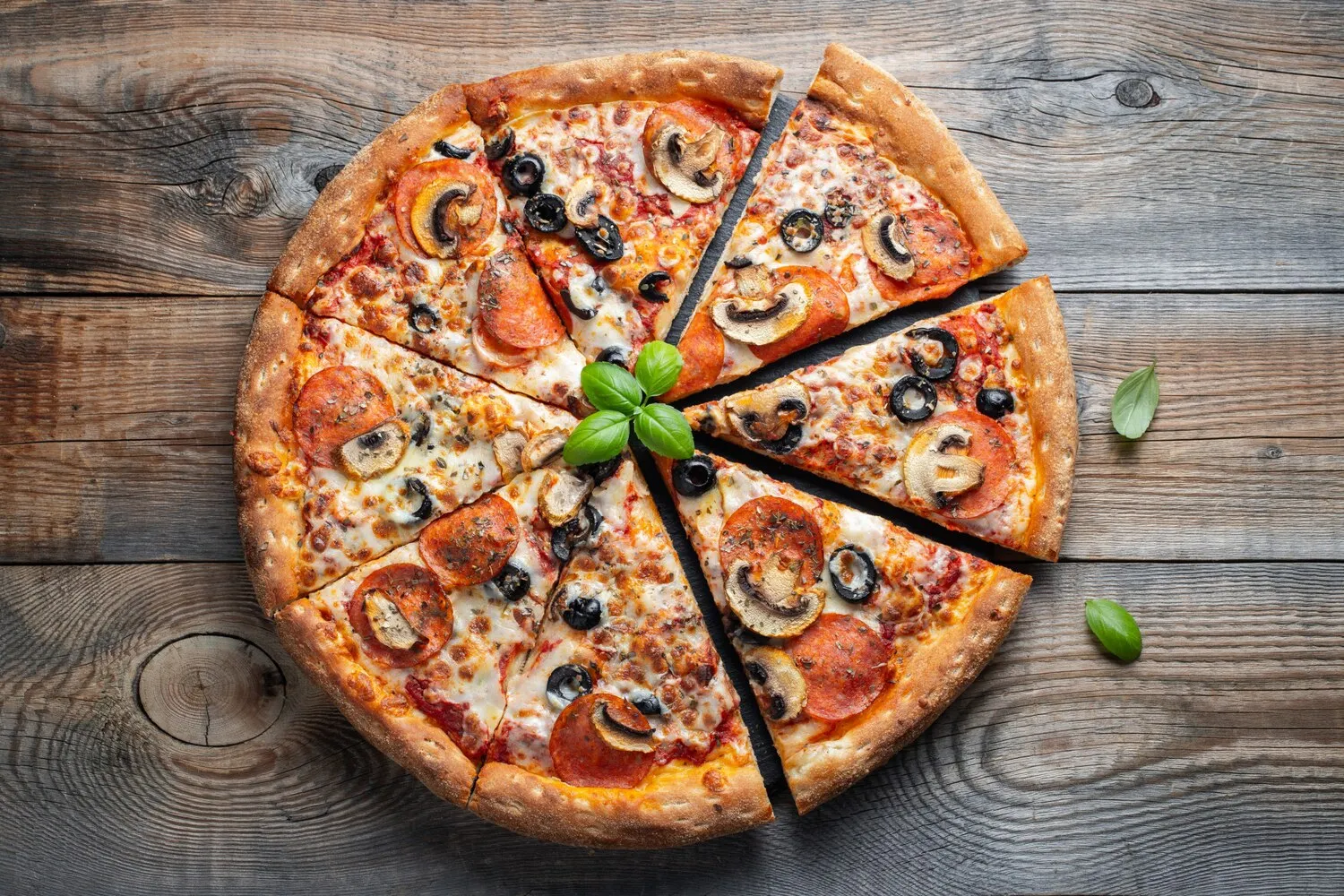
Pizza
Dc Pizza and Rolled Ice Cream is known for their pizza. Specific types or ingredients haven't been verified.
Nutrition Facts
* The % Daily Value (DV) tells you how much a nutrient in a serving of food contributes to a daily diet. 2,000 calories a day is used for general nutrition advice.
Dc Pizza and Rolled Ice Cream
Pizza's ancestry can be traced back to ancient civilizations that consumed flatbreads with toppings. However, the modern pizza, as we know it, evolved in Naples, Italy, in the 18th or early 19th century. Neapolitan bakers started adding tomatoes, a New World import, to their flatbreads, creating a simple yet revolutionary dish that was initially popular among the poor.
Pizza has transcended its Italian origins to become a global phenomenon and a symbol of casual dining, community, and comfort food. Its adaptability and shareable nature contribute to its widespread popularity.
Social Gathering
Pizza is often associated with social gatherings, parties, and family meals. Its shareable format makes it a perfect choice for feeding a group and fostering a sense of community.
Cultural Adaptation
Pizza has been adapted to suit local tastes and preferences around the world. Regional variations often incorporate local ingredients and culinary traditions, resulting in unique pizza styles that reflect the culture of their origin.
Comfort Food
Pizza is widely considered a comfort food due to its satisfying flavors, familiar ingredients, and association with positive memories and social experiences.
Pizza offers a diverse range of flavors based on the toppings and crust style. The fundamental flavor profile balances savory, tangy, and often slightly sweet notes.
The core flavors revolve around the interplay of: * **Crust:** Provides a base of earthy, bready, and sometimes yeasty flavors. Variations like thin crust, deep-dish, and wood-fired crusts offer diverse textures and subtle flavor differences. * **Tomato Sauce:** Adds acidity, sweetness, and a foundational savory element. The sauce's flavor can range from bright and fresh to rich and cooked down, depending on the recipe. * **Cheese:** Typically mozzarella, contributes a creamy, salty, and milky richness that binds the other ingredients together. Other cheese varieties, such as provolone, parmesan, and ricotta, bring their unique flavor profiles to the pizza. * **Toppings:** A vast array of toppings, from meats like pepperoni, sausage, and ham to vegetables like mushrooms, onions, and peppers, allows for endless customization. These toppings introduce further levels of saltiness, spice, umami, and sweetness, creating a complex and dynamic flavor experience.
Crust Consistency
Proper hydration and kneading are crucial for developing a flavorful and airy crust. Allow the dough to rise adequately for optimal texture.
Sauce Application
Apply the tomato sauce evenly across the crust, leaving a small border to prevent it from overflowing during baking. Use a good quality sauce for the best flavor.
Cheese Distribution
Spread the cheese evenly over the sauce, ensuring adequate coverage to prevent dry spots. Consider using a blend of cheeses for added flavor and texture.
Oven Temperature
Bake pizza at a high temperature (450-500°F or 230-260°C) to achieve a crispy crust and melted cheese. Use a pizza stone or baking steel for optimal heat distribution.
Explore additional Pizza dishes and restaurants
Explore PizzaDiscover top dining spots and culinary experiences in Chestermere.
Explore ChestermereLearn more about the food culture, restaurant scene, and culinary heritage of Canada.
Explore Canada